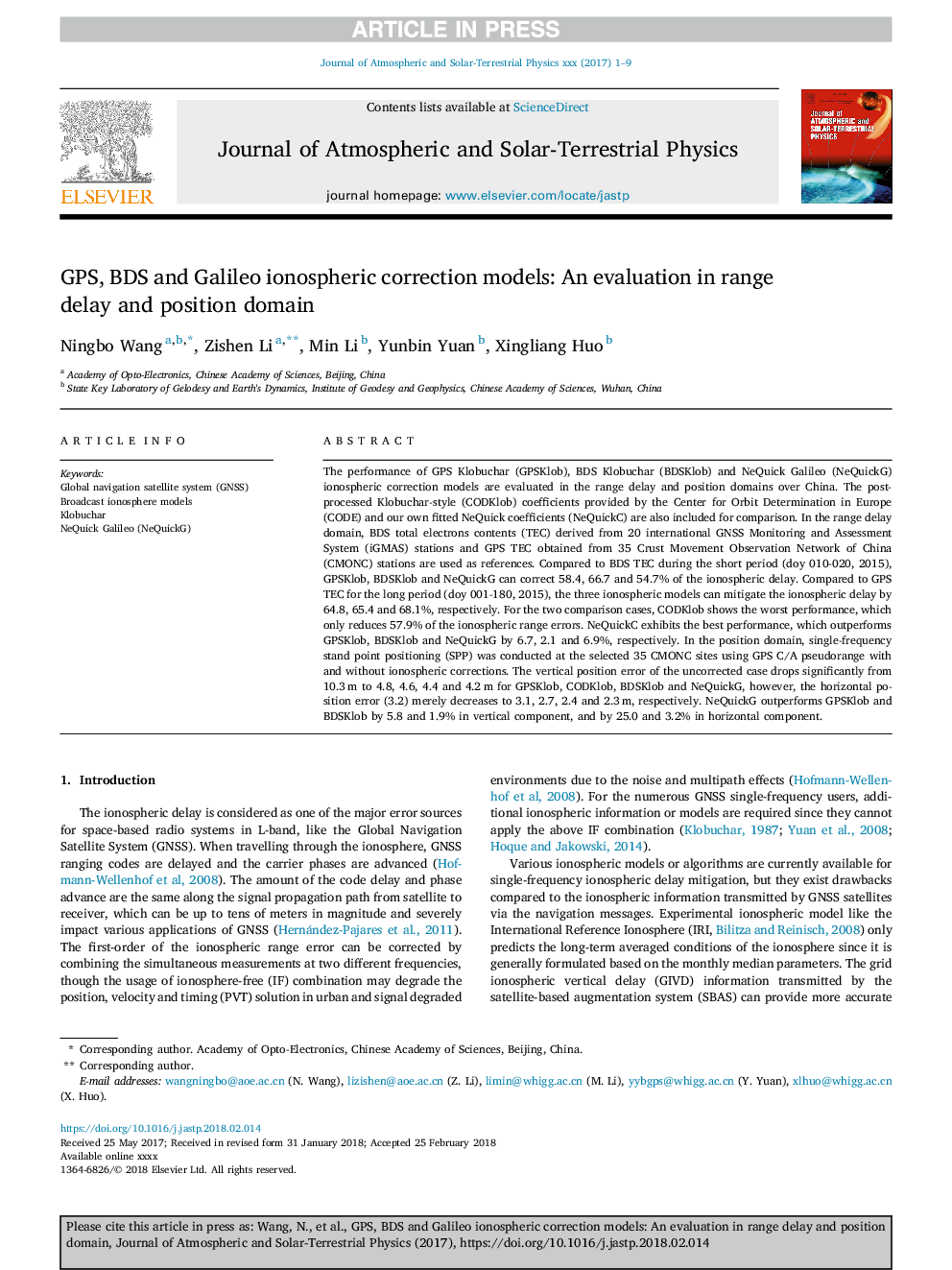| Article ID | Journal | Published Year | Pages | File Type |
|---|---|---|---|---|
| 8139600 | Journal of Atmospheric and Solar-Terrestrial Physics | 2018 | 9 Pages |
Abstract
The performance of GPS Klobuchar (GPSKlob), BDS Klobuchar (BDSKlob) and NeQuick Galileo (NeQuickG) ionospheric correction models are evaluated in the range delay and position domains over China. The post-processed Klobuchar-style (CODKlob) coefficients provided by the Center for Orbit Determination in Europe (CODE) and our own fitted NeQuick coefficients (NeQuickC) are also included for comparison. In the range delay domain, BDS total electrons contents (TEC) derived from 20 international GNSS Monitoring and Assessment System (iGMAS) stations and GPS TEC obtained from 35 Crust Movement Observation Network of China (CMONC) stations are used as references. Compared to BDS TEC during the short period (doy 010-020, 2015), GPSKlob, BDSKlob and NeQuickG can correct 58.4, 66.7 and 54.7% of the ionospheric delay. Compared to GPS TEC for the long period (doy 001-180, 2015), the three ionospheric models can mitigate the ionospheric delay by 64.8, 65.4 and 68.1%, respectively. For the two comparison cases, CODKlob shows the worst performance, which only reduces 57.9% of the ionospheric range errors. NeQuickC exhibits the best performance, which outperforms GPSKlob, BDSKlob and NeQuickG by 6.7, 2.1 and 6.9%, respectively. In the position domain, single-frequency stand point positioning (SPP) was conducted at the selected 35 CMONC sites using GPS C/A pseudorange with and without ionospheric corrections. The vertical position error of the uncorrected case drops significantly from 10.3â¯m to 4.8, 4.6, 4.4 and 4.2â¯m for GPSKlob, CODKlob, BDSKlob and NeQuickG, however, the horizontal position error (3.2) merely decreases to 3.1, 2.7, 2.4 and 2.3â¯m, respectively. NeQuickG outperforms GPSKlob and BDSKlob by 5.8 and 1.9% in vertical component, and by 25.0 and 3.2% in horizontal component.
Related Topics
Physical Sciences and Engineering
Earth and Planetary Sciences
Geophysics
Authors
Ningbo Wang, Zishen Li, Min Li, Yunbin Yuan, Xingliang Huo,
